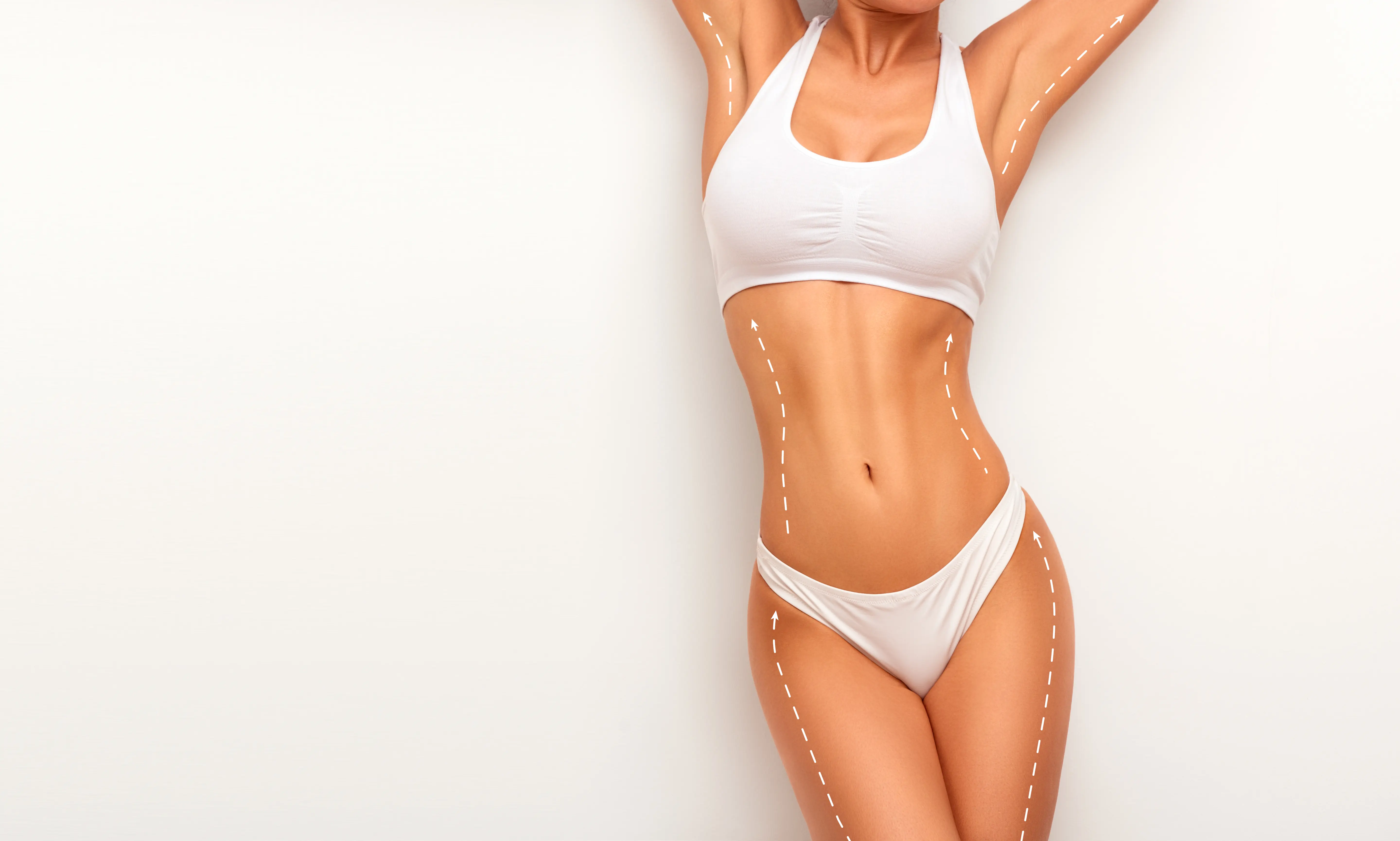Smart Lipo Guide – Everything You Need to Know
I started doing Smart Lipo in 2007 and as of March 9, 2020, I have done 996 cases. Smart Lipo is one of my favorite procedures. It is also known as Laser-lipo. In this post, you will learn everything you need to know about Smart Lipo.
Smart Lipo Advantages
Why do I enjoy doing it so much? There are a few reasons. It is done in my office with the patient awake. Almost all of my patients will have oral sedation and local anesthesia. Oral sedation makes the procedure relaxing. A small number of patients (for example if they are only doing the neck area), will opt for no sedation. If you have oral sedation, then you must have someone drive you home after the procedure.
The patients are awake during Smartlipo. This allows me to chat and to get to know them better. I enjoy talking with my patients!
Benefits of Smart Lipo
In the properly selected patient, Smart Lipo is almost always going to be beneficial. It has to be because I am literally melting fat with the laser. I then liposuction the fat away. This means there is going to be less fat in the area after the procedure. The key is making sure that the patient’s expectations are in line with what I can achieve.
How Long Can I See Results?
It is important, and I always stress this in my consults, that it takes 6 months to reach the maximum benefit from the Smartlipo. You need to be patient. You will see results, sometimes on the table, sometimes in a couple of weeks and sometimes not before several weeks. However, you will almost always continue to improve for 6 months (provided you do not put on body fat).
How is Smart Lipo Done?
Before:
Before proceeding with treatment, you will need to meet with the surgeon. I usually meet my patients in the office. For patients living far away, I consult either via email or by phone.
For the 10 days prior to surgery, it is important to avoid aspirin, Bufferin or Excedrin, since they are blood thinners (interfere with platelet aggregation). Ideally, you should also avoid Motrin, Advil, Ibuprofen, Alleve, all of the NSAIDs. Tylenol/acetaminophen is perfectly fine.
On The Day of Surgery
On the day of surgery, you should shower and wash with Hibiclens. Also, it is important to eat and drink something before surgery. However, you shouldn’t have countless cups of coffee beforehand. This might result in you needing the bathroom during the procedure. That is, however, a manageable nuisance.
You will be marked in the standing position and photos taken for your chart. (No one has their photos placed on the web site unless they have given us specific permission to do this.) During the procedure, you will be wearing suntan goggles so that you do not need to worry about seeing what is being done. (This is also required for your safety when using the laser).
Generally, 1-2 small incisions (2-3mm.) are planned for each area being treated (this can vary). These areas are numbed up with a very small injection of local anesthetic with a tiny needle. I do everything I can to make this very easy for you. After this, you are prepped and draped. A small incision is made and a thin cannula is inserted into the subcutaneous fat. The cannula is connected to an IV bag which includes plenty of local anesthetic. This is infiltrated into the fatty layer. You will feel numb and I can also add more local anesthetic if you do feel any discomfort.
After the area is fully numb, a small fiber-optic laser is inserted and moved back and forth in the subcutaneous fat. Whenever I step on the peddle, 2 different wavelengths of laser light are emitted. These frequencies are selected because they have a much, much higher absorption by the fat cell.
Fat is very sensitive to heat. The heat damages the cell membrane and the fat cell will either die immediately or be damaged and will be resorbed days later. After melting the fat, it is removed by liposuction. I often use 2 different size cannulas, to both increase the amount of fat removed and also to help ensure a smooth-looking final appearance.
Following this, I close each small incision with a single dissolving suture and then a steristrip is applied. You then put on a Spanx or Spandex or compression garment and you have someone drive you home.
I give every patient I operate on my personal cell phone number so that they can text me if they have questions or concerns.
Why is Smart Lipo Effective?
There are 3 reasons why you improve.
- Fat is removed. It is important to remember, however, that not all of the fat will be removed. When I am liposuctioning out the fat, at first it will be a white/yellow fluid which is melted fat. After some point in time, this fluid will stop and nothing will come out. Then after more time, the fluid coming out will be mostly bloody. I explain in my consult that everyone gives up fat but also everyone holds onto some fat. I have seen some patients, who were treated elsewhere, who were over-resected. The results are awful and very fake. There are NO miracles. If you want to look your best, improving your diet and decreasing your body fat will maximize your final result. (See my blogs on intermittent fasting and ketone supplements). Exercise is helpful but not nearly as critical as improving your diet.
- The procedure results in skin tightening. The heat of the laser will cause the collagen and elastin fibers in the skin to contract. This can vary from patient to patient. Certain areas will more predictably tighten than others. For example, love handles (flanks) almost always tighten perfectly. The inner thighs are less predictable because, for most women, the skin tone is poor in this area.
- The laser makes small, thin tracts throughout the fat: These tracts will heal with scar tissue. I use the analogy that I convert the fat from a block of cheese, into Swiss cheese with numerous holes running through it. This scar tissue takes about 2 months to form, and then from months 2-6, this scar tissue will contract and tighten.

What Areas Are Commonly Treated By Smart Lipo?
Areas which are treated include:
- Submental/neck
- Upper arms – which may be treated with High Definition Smartlipo (see blog for details)
- Superolateral breast area (common for large breasted women to have a fat pocket here which protrudes above their bra)
- Back/bra area
- Flanks/love handles
- Abdomen – upper and lower
- Pubic area – skin tone can be a problem here if it is already very saggy.
- Thighs – inner and outer
- Knees – above and to the sides of the knees.
- Calves – less commonly done since usually they are large due to muscle.
What to Expect After Smart Lipo?
Almost everyone that has oral sedation, will likely take a nap when they return home. You can eat anything you want and walk around. You absolutely cannot drive any vehicle until the following day. Most patients return to work the next day, although if you are larger and treating several areas at once, you may be a bit sore. The morning following Smarlipo you can definitely shower and drive to work. The next day you can resume marital relations and go over for long walks, just don’t drive your heart rate up significantly during the walk. You can return to working out after 5 days, though activities that do a lot of bouncing such as running or a body pump class, maybe more comfortable if you wait ten days.
How Long Should I Wear a Compression Garment?
The length of time recommended to wear the compression garment varies from person to person. It depends on your skin elasticity. For many patients, I will suggest they can stop wearing the compression garment after 5 days. For others, I may suggest they wear it for 6-12 weeks for the majority of the time.
Smart Lipo Recovery
You may experience bruising which will take 2-3 weeks to go away. The skin may feel numb or different. This can last for several weeks. In areas with more fat, there may be firm areas, which you should massage daily for a few minutes. (Some patients love getting a lymphatic massage, which is perfectly fine. You definitely do not need to spend the money to do this). These firm areas look normal, they are just firm to the touch and can take months to reduce in size. They are not dangerous and are not infections.
The follow-up appointments are after 2 weeks, then every two or three months for six months. Of course, if you live far away, it is fine to skip these and just email in photos.
How Does Smart Lipo Compare to Other Techniques?.
Sculpsure is entirely non-invasive. This means it is done without incisions. Smart Lipo, on the other hand, does require small 3mm incisions. This makes Smart Lipo far more aggressive than Sculpsure. This means what can be achieved in one session via Smart Lipo will require at least two sessions via Sculpsure.
I am definitely NOT a fan of Coolsculpting and I prefer Sculpsure vs Coolsculpting.
I do think that Smartlipo has a definite advantage over just regular traditional liposuction. It has that middle step that melts the fat and tightens the skin. Regular liposuction definitely works. However, Smartlipo is usually done under local, whereas regular liposuction is usually done under general anesthesia in the operating room. I believe that Smart Lipo can allow for the removal of more fat with a smoother final result and greater skin tightening. Of course, there is almost no risk of blood clots or DVT with Smartlipo since it is not done under general anesthesia.
How Can I Enhance My Final Result?
Almost everyone can maximize their results by decreasing their body fat. This is almost entirely achieved by diet modification. I am a huge fan of intermittent fasting and also ketone supplements. (see my blogs on my website and also drdavidberman.pruvitnow.com)
Can I Get Fat in the Areas That Were Treated?
Many patients have read on the internet (as I have been asked about this numerous times), that you cannot get fat in those areas again. This is definitely not true! If you put on weight, the fat (assuming it is not muscle weight) has to go somewhere. There are fat cells left behind and these fat cells will just enlarge if you put on fat again.
What Are The Costs of Smart Lipo?
In general, Smartlipo will be less expensive than other types of invasive liposuction. This is because I do all of my Smartlipo in the office with just local anesthesia with oral sedation. Since there are no IV’s, there is no need to pay for an anesthesiologist. You will still be very comfortable. In addition, there is no need for you to pay for a surgicenter or hospital operating room. However, Smart Lipo, if done well, does take more time, than traditional liposuction. With Smart Lipo, there should be no increased risk of blood clots or DVT, like there is with general anesthesia.
As you might expect, the more areas that you treat with Smartlipo, the more expensive the procedure will be. Since I put a large dose of local anesthetic and it is a somewhat slow process, for multiple large areas, I will often split the surgery up over 2 days. (These can be the next day or many days apart, depending on your convenience.)
I have positioned my prices just slightly above or the same as other experienced plastic surgeons. I have not done any surveys on this, but this is just my impression from the patients that come to see me.
You can definitely get it cheaper if you don’t care if a board-certified plastic surgeon does your surgery. Just know that this is surgery and there are risks involved. I personally have done almost 1,000 Smart Lipo cases in the office as of March 9, 2020. By the time you read this, the numbers will be higher since I do a number of these almost every week. You need to decide if you want a non-surgeon, with almost certainly much less experience doing your Smartlipo.
Even cheaper still, you can find someone who cannot attract patients through their experience, skill and reputation, so they will do a Groupon. You should ask yourself when the fees are super low and Groupon takes a huge part of the fee, why is the doctor doing this? Are liposuction and other surgical procedures really where you want to hunt for the cheapest price?
One final point. One of the advantages of seeing a board-certified plastic surgeon is that I have other tools at my disposal. A non-plastic surgeon will likely just recommend Smart Lipo for everything. That is all they can offer. There are some patients I see that are better served with a tummy tuck or arm lift. I can offer these options. When I can’t help a patient further, I will tell them that they should not do any procedure. Sometimes for a procedure to have the desired result, they will first need to lose weight.
Smart Lipo Review
Contact us for a consultation!
Contact us for a consultation







